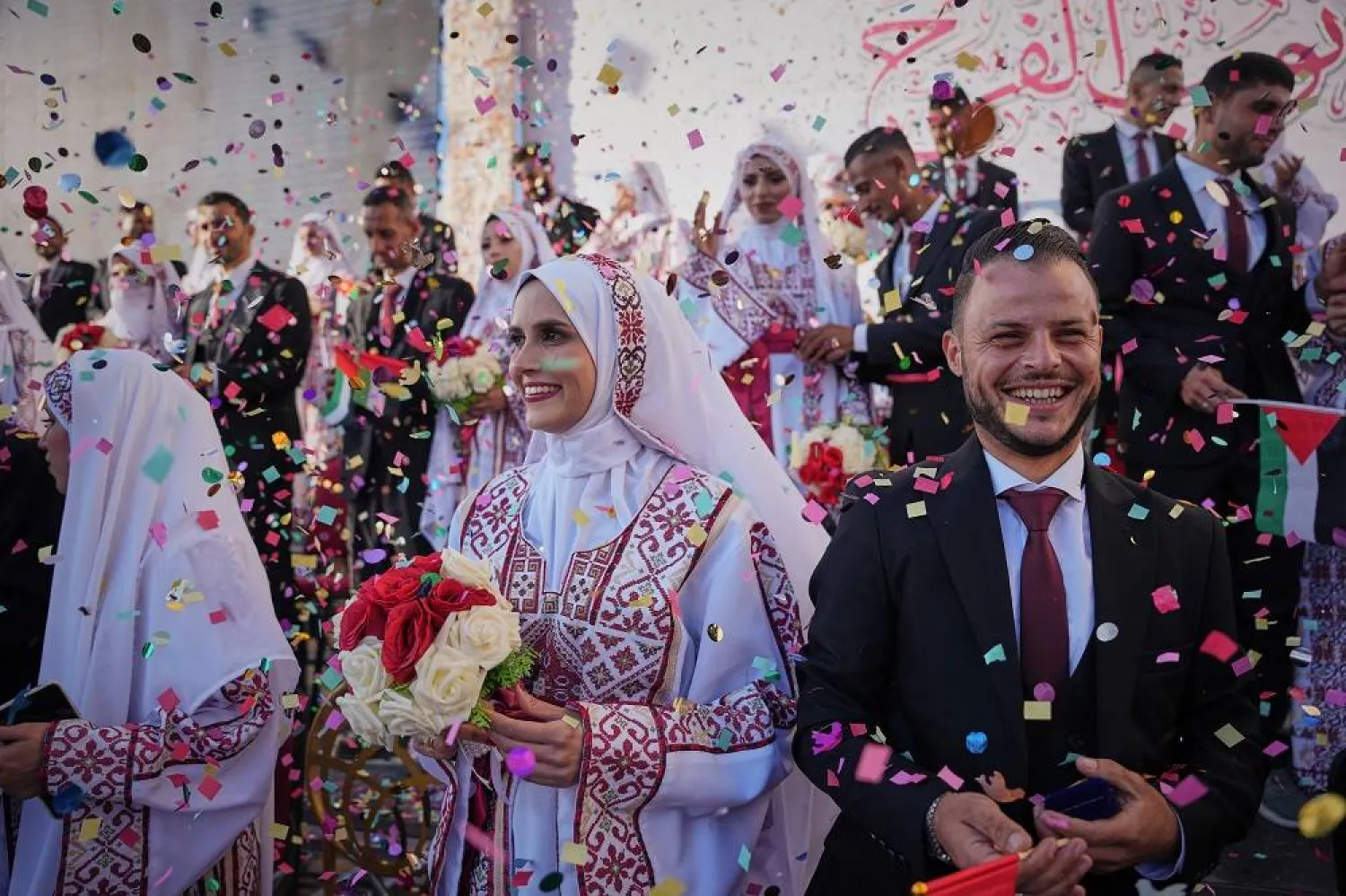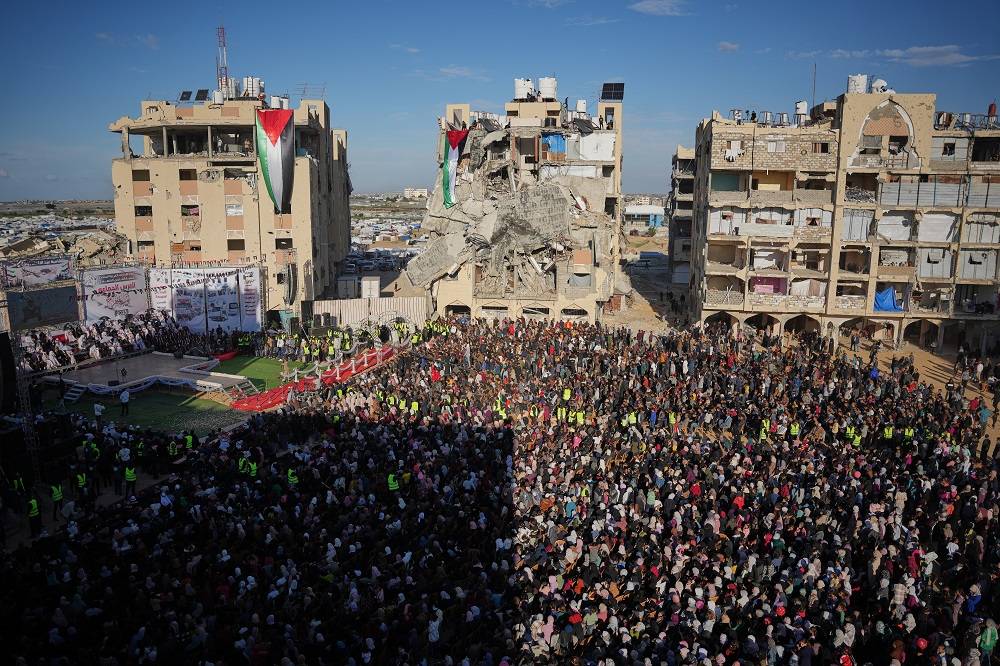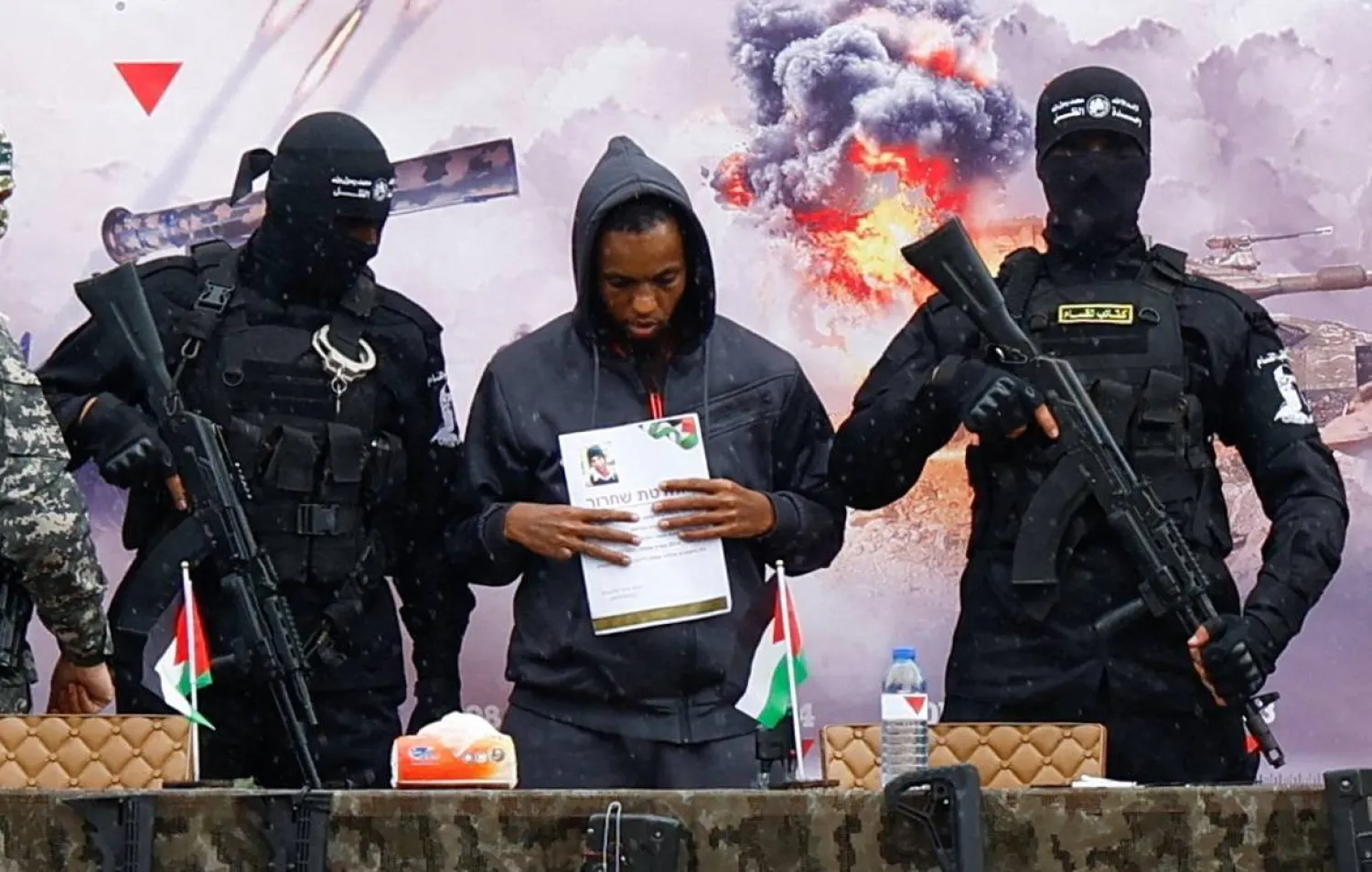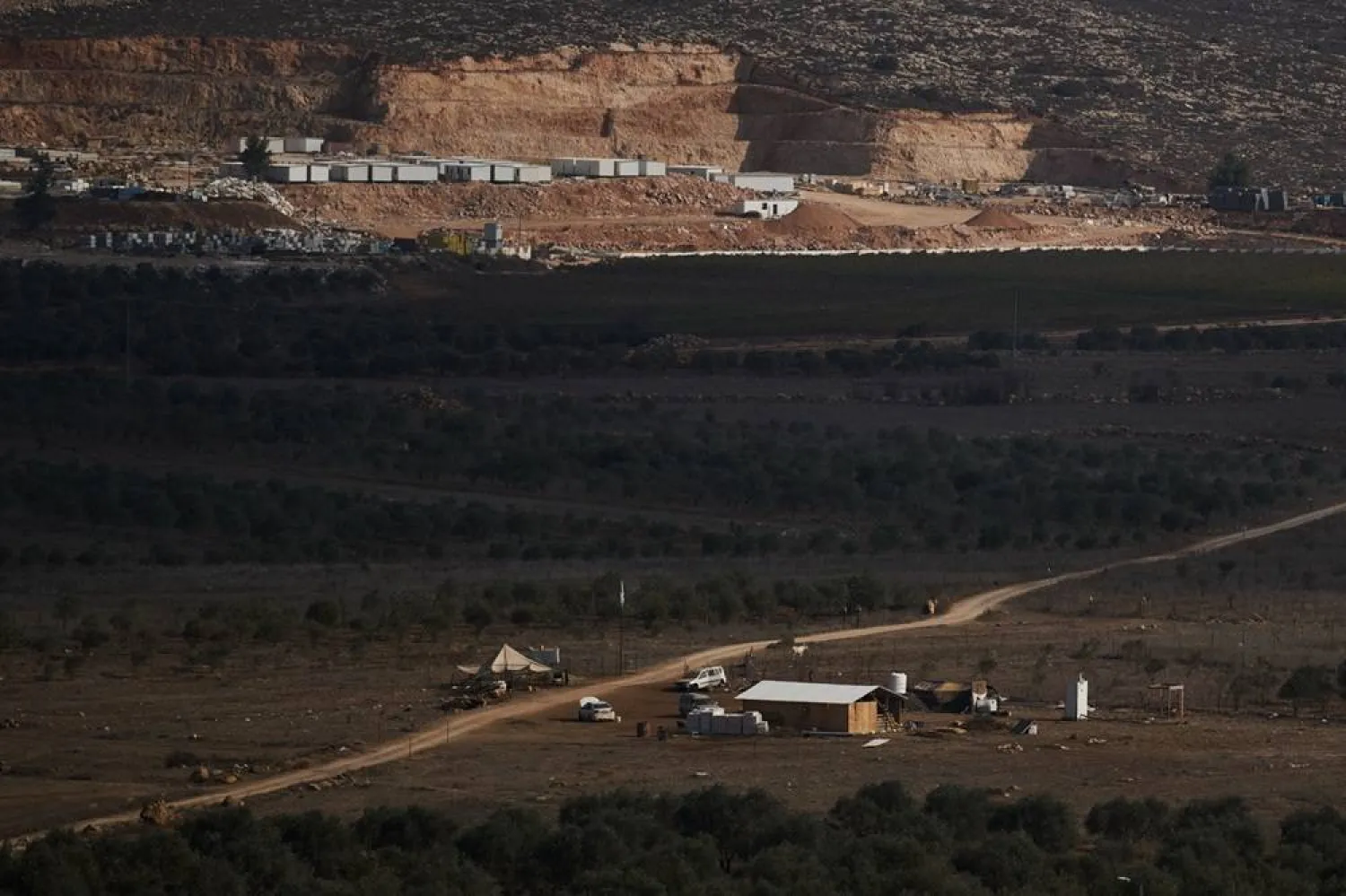When Syrian President Ahmed al-Sharaa met US President Donald Trump in Riyadh on May 14, the encounter marked a striking departure from Syria’s political norm, and one that sent ripples of surprise through both allies and adversaries.
While many Syrians expressed enthusiasm over the unexpected meeting, the reaction was far from unanimous.
For extremist circles, the image of al-Sharaa seated beside a US president, long portrayed in their rhetoric as the embodiment of a hostile international order, triggered deep unease and, in some cases, fury.
The backlash was swift and fragmented. Although not centrally coordinated, it was visible across encrypted Telegram channels - the platform of choice for many extremist groups - as well as in private gatherings and scattered posts on the social media platform X.
Reactions ranged from suspicion and ideological denunciation to outright accusations of apostasy. The criticism largely targeted al-Sharaa’s growing openness to the West, particularly Israel, and debated the legitimacy of such outreach under Islamic law.
Despite the noise, these objections appear to carry little political weight inside Syria’s emerging state institutions. Analysts and insiders say the dissent does not reflect the views of the security and military apparatus that has taken shape following the collapse of the former regime.
At the heart of this new order is a coalition of former factions, notably those once aligned with Hayat Tahrir al-Sham (HTS), which now forms the backbone of Syria’s restructured army and civil institutions. These groups have largely rallied around al-Sharaa, endorsing his foreign policy moves and viewing his leadership as best suited for steering the country through a fragile transition.
The new Syrian army, drawn from multiple factions that once formed the joint operations room which toppled the Assad government in Damascus, has since consolidated under state command.
Most of its components now back al-Sharaa, even as he pushes for diplomatic normalization, including tentative overtures to Israel - a shift they see as necessary for post-conflict stability.
While Syria’s new institutions rally around al-Sharaa’s push for reconciliation and international engagement, a defiant voice has emerged from outside the state structure - one that rejects his overtures and threatens to reignite instability.
The group calling itself Saraya Ansar al-Sunna has so far been the only actor to publicly oppose al-Sharaa’s trajectory. Shrouded in secrecy, the group is among the newest armed movements to surface following the collapse of the Assad regime.
Its presence remains confined to encrypted Telegram channels, where it has adopted a hardline tone steeped in religious denunciation and threats of violence. It has yet to establish a visible presence on the ground or disclose a clear organizational identity.
In a recent statement circulated online, the group vowed to escalate attacks across Syrian provinces and in the northern Lebanese city of Tripoli - where it previously claimed activity.
The message marked a sharp warning from a faction that, despite its limited footprint, could stir trouble through lone-wolf operations, a method favored in such ideological circles.
Saraya Ansar al-Sunna first claimed responsibility for an attack in February in the village of Arzeh in Hama province, which killed more than ten civilians.
The group’s founding statement framed the assault as part of a campaign of “sectarian revenge” targeting Alawites and Shiites, whom it referred to using derogatory sectarian terms. The communiqué also described the group as “decentralized” and reliant on autonomous cells with no identifiable leadership or headquarters.
Although Syria’s Interior Ministry declined to provide details on the group, officials confirmed they are closely monitoring its activity – a sign that authorities consider the threat credible, despite the group's lack of formal structure.
Who are Saraya Ansar al-Sunna?
Sources in northern Syria told Asharq Al-Awsat that the group has claimed responsibility for a series of assassinations in rural Hama and Homs, targeting Alawite civilians.
The group framed the killings as “retribution” against alleged Assad loyalists, or “shabiha”, whom they accuse the state of failing to prosecute. The sources said growing frustration over the lack of transitional justice has fueled accusations that the state is delivering “selective justice,” a phrase increasingly used to mock what some see as a stalled reconciliation process.
Despite fiery rhetoric and threats, the shadowy group has yet to establish a tangible presence on the ground.
So far, its activities remain confined to anonymous, closed Telegram channels, where it disseminates sharply worded statements steeped in religious condemnation and anti-government sentiment.
According to sources familiar with extremist activity in central Syria, the group relies entirely on text-based messaging and has shown no visual evidence of leadership or organized operations.
Two names have emerged frequently in connection with the group: “Abu Aisha al-Shami” and “Abu al-Fath al-Shami” - likely pseudonyms. Both are believed to be former members of Hurras al-Din, an offshoot of al-Qaeda. Intelligence suggests they have since reemerged in small clandestine cells operating quietly in parts of rural Homs and Hama.
In one statement posted on a Telegram channel, Abu al-Fath al-Shami - introduced as the group's “religious authority” - launched a scathing attack on President Ahmad al-Sharaa, accusing him of apostasy and betrayal.
His message, couched in harsh ideological language, cast the new Syrian government not merely as a political adversary but as a theological enemy - a marked escalation in tone.
Still, the group has so far refrained from direct armed confrontation with the Syrian state. Instead, it appears to be focused on retaliatory attacks against what it calls the “social incubators” of the former regime - a reference to Alawite civilian communities historically aligned with Bashar al-Assad.
This approach, emphasizing ideological hostility over direct conflict, reflects a broader, long-standing rift within the extremist landscape in Syria.
It mirrors the old divide between al-Qaeda’s traditionalist wing and the more localized, pragmatic faction led by Hayat Tahrir al-Sham under al-Sharaa. Though this internal split had faded from prominence, al-Sharaa’s high-profile meeting with Trump in Riyadh appears to have reignited it, sparking renewed debate among radical ideologues.
Prominent extremist figures have stepped up criticism of al-Sharaa, accusing him of betraying ideological principles in pursuit of political gains, particularly following his unprecedented outreach to the US and Israel.
Among the loudest voices was Khaled Abu Qatada al-Ansari, a former senior figure in Hurras al-Din, who denounced the Syrian state as “treasonous” and accused it of deviating from the “true path.”
His comments were echoed by Samer al-Ali, also known as Abu Ubaida, a former religious authority in Jabhat al-Nusra, who charged al-Sharaa with abandoning the core tenets of the original project for political pragmatism.
Outside Syria, criticism followed a similar pattern. Abu Abdullah al-Shami, a well-known ideologue based in Iraq, described al-Sharaa’s foreign policy pivot as a “fundamental betrayal of doctrine.”
Meanwhile, a stark split emerged among veteran thinkers: cleric Abu Muhammad al-Maqdisi reaffirmed his staunch opposition to al-Sharaa, framing his overtures to Washington and Israel as a departure from religious “constants.”
In contrast, Abu Qatada struck a more nuanced tone, suggesting that such shifts might be necessary in the post-Assad era to safeguard the revolution’s gains.
The debate underscores a widening rift between two ideological camps - one branding al-Sharaa an apostate, the other viewing his actions as a pragmatic response to evolving realities and branding him as the “man of the moment.”
No Organized Opposition Within the State
Despite the heated rhetoric, former military commander Adham Abdulrahman told Asharq Al-Awsat that there is no significant extremist bloc within Syria’s government or its security institutions challenging al-Sharaa’s policies.
“This is the policy of a state, not just one man - even if al-Sharaa is the architect,” he said.
“While there is still public and religious discomfort around peace with Israel, it's no longer as emotionally charged as it once was. Over time, these sentiments may coalesce into various forms of opposition, but they won’t be exclusively religious – they could be nationalist or political as well.”
He added that even radical factions, especially foreign fighters who once resisted integration, are now gradually shifting their focus.
“Most of them are moving toward reintegration, prioritizing daily life and stability. They may not fully endorse the new government, but they’re adapting - I’ve seen this happen in multiple cases,” Abdulrahman said.
Extremist groups such as ISIS and al-Qaeda are attempting to exploit discontent within Syria’s shifting political landscape, but analysts say al-Sharaa’s government – forged through years of conflict – is proving far from vulnerable.
“ISIS is actively seeking to regroup and recruit from disillusioned or marginalized segments, relying on its familiar slogans,” said former military commander Adham Abdulrahman.
“But this new government, born from an authentic organizational experience and equipped with deep security and military know-how, is not an easy target.”
Diverging Currents in HTS
According to Ahmad Sultan, a researcher specializing in Islamist movements, internal divisions are emerging within the HTS, the backbone of the new Syrian state.
“Some factions within HTS still cling to hardline ideology and remain visibly frustrated with al-Sharaa’s policy shifts,” Sultan told Asharq Al-Awsat. “They lack a coherent vision for governance beyond regime collapse and still regard any contact with perceived enemies as tantamount to apostasy.”
By contrast, other elements within HTS advocate a more pragmatic approach. “They view political openness as a tactical necessity for this phase,” Sultan said. “al-Sharaa’s administration is walking a fine line between these factions to preserve cohesion amid Syria’s complex reality.”
Sultan emphasized that the pro-al-Sharaa bloc remains dominant. “The opposition within HTS doesn’t represent the majority. The leading current supports Sharaa and wields greater power,” he said.
“The administration has made it clear that it won’t align with anti-engagement elements, though it may seek to pacify them to avoid destabilization - especially as al-Sharaa’s international legitimacy hinges on curbing extremism.”
Fears of Splits, Push for Consolidation
The researcher warned that any significant rift within HTS - the central pillar of the state - could destabilize the entire administration and potentially spark internal conflict.
“Al-Sharaa’s government is preparing to tackle critical files: the Kurdish-led Syrian Democratic Forces (SDF) in the northeast, the presence of foreign fighters, border control, and consolidating central authority,” Sultan explained. “To do that, it must neutralize ultra-hardline elements within.”
He added that al-Sharaa is relying on practical methods to prevent extremist drift inside his administration, including religious education and theological persuasion aimed at preserving unity.
“Some clerics close to al-Sharaa command real influence among hardline circles,” Sultan said. “If tensions escalate, these figures could play a key role in diffusing conflict through religious argumentation and appeals to collective responsibility.”
Al-Sharaa is prepared to take tough measures - including arrests and even eliminations - against hardline elements within the state who reject moderation and persist in incitement.
“Containment through religious dialogue is the preferred option,” said Sultan.
“But when that fails, the alternative may be surgical removal of factions that prove resistant to integration.”
Sultan warned that the government will not tolerate extremist mindsets if they shift toward agitation and destabilization. “If a radical current chooses confrontation, al-Sharaa will not hesitate to resort to decisive tools, including imprisonment or targeted action,” he said.
Strained Popular Base
Despite the state’s assertive posture, some observers caution that the strategy carries risks, particularly if it alienates the broader revolutionary base that once fueled Syria’s rebellion.
“The Syrian landscape remains fluid and unpredictable,” said Mohamed Ibrahim, also known as Abu Yahya al-Shami, a former military commander within an Islamist faction. “If the government wants long-term stability, it cannot afford to lose the core support of former revolutionaries.”
Al-Shami, who remains closely connected to Islamic movements, drew a clear line between constructive dissent and extremist rhetoric.
“Takfir- branding others as apostates - is the weapon of extremists and ISIS sympathizers. It’s unacceptable to many of us within the Islamist current,” he told Asharq Al-Awsat.
He stressed that criticism of al-Sharaa’s government should be expressed through informed, balanced discourse.
“There is no such thing as ‘legitimate chaos.’ Sharia is the standard by which actions are judged. Disagreements must be addressed scientifically and socially, not through disorder.”
Al-Shami also warned that hardline rhetoric by extremist groups risks influencing disillusioned youth and fueling radicalization in Syria’s fragile post-war landscape.
“There is concern that some enthusiastic or overly zealous youth may be swayed by extremist narratives,” al-Shami told Asharq Al-Awsat, adding that “those with experience and awareness are working to contain these tendencies, which only aggravate problems rather than solve them.”
He also cautioned that ISIS remains a looming threat, capable of exploiting simmering discontent in Salafi circles and drawing in defectors from factions opposed to Syria’s new leadership under al-Sharaa.
“ISIS thrives in environments where ignorance and extremism take root,” he said.
“The group could recruit from those who once fought under revolutionary banners, only to find themselves later disillusioned with a political reality that doesn’t match the slogans they lived by,” explained al-Shami.
As al-Sharaa’s administration pushes ahead with normalization and international outreach, including controversial overtures to former foes, observers say the ability to manage backlash from former allies and militant hardliners will be key to preserving security and cohesion.










